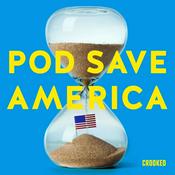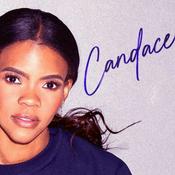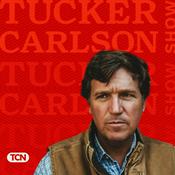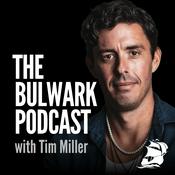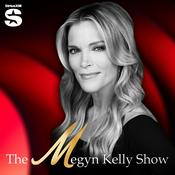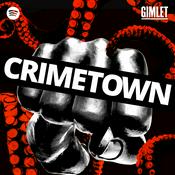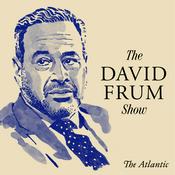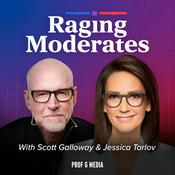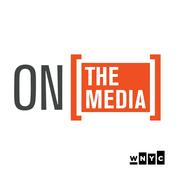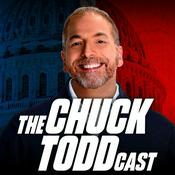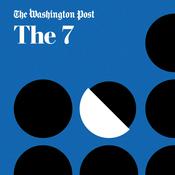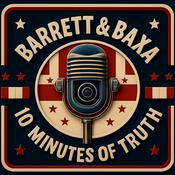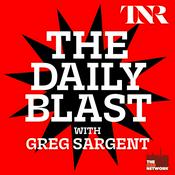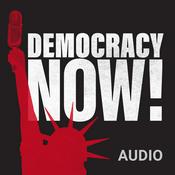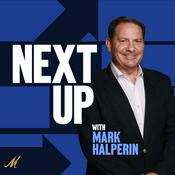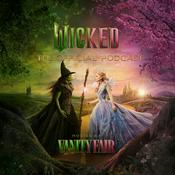802 episodes

Podcast #1231: Mail Bag
12/12/2025 | 1h 14 mins.
On this week's show we come back after taking a week off and read your emails and take a look at the week's news. News: Netflix Officially Announces a Deal to Buy Warner Bros. Discovery & HBO Max For $82.7 Billion Paramount makes $108bn all-cash bid for Warner Bros. Discovery Kaleidescape Launches Mini Terra Prime Movie Server Other: HT Guys Amazon Lists Listener Emails On this week's show we read your emails. The following are links that are discussed on the show. Brady's 98" TV Dilemma - Samsung 98" Class - DU9000D Series - 4K UHD Smart TV | Costco $1800 vs Sony 98" Class BRAVIA 5 Mini LED 4K UHD Smart Google TV (2025) K98XR50 - Best Buy $5000 Eric's recommendation for The Chair Company. Scott's email about connecting your set top box correctly - Your Apple TV Is Probably Plugged Into The Wrong HDMI Port - Here's Why - BGR and The Reason Why Amazon Basics Tech Is So Cheap and Hisense 116-Inch UX Series RGB-MiniLED 4K UHD HDR Google Smart TV(116UX, 2025) $20,000 Mark's solution for Chamberlain dropping support for Google Home, Apple Home, and Amazon A-Lady. Chamberlain blocks smart home integrations with its garage door openers — again Smart Garage Door Opener – ThirdReality And we finish the main part of this episode with Joe's app recommendation A Cool New Cord Cutting App: Multiview for Apple TV and Android / Google TV link to the app here ->Multiview App Stick around after the show to hear Ara's solution to the College Football playoff!

Podcast #1230: Matter Update
12/05/2025 | 32 mins.
This week Ara is on vacation and rather than skip a show we go back to May of 2022 where we looked at a panel discussion about teh then new automation framework Matter. We play for you that discussion and then Braden and I discuss that current state. Emails and news will return next week.

Podcast #1229: Second Screen Viewing
11/28/2025 | 29 mins.
On this week's show we look at the phenomenon of watching a little screen while simultaneously watching a big screen. We also read your emails and take a look at the week's news. News: New data shows ESPN, Fox One both over 2 million subscribers Get Disney+ and Hulu for a combined $5 per month for 12 months Second Screen Viewing The phrase "Second Screen Viewing" is when a person watches TV and simultaneously uses a secondary device like a smartphone, tablet, or laptop to engage with content related (or unrelated) to what's on the TV. On this week's show we will focus on the "unrelated" aspect Second Screen Viewing and how it is affecting what you watch on your TVs Second-screen behavior has become a common companion to TV viewing allowing viewers to engage in social TV by live-tweeting or posting reactions on platforms like X (Twitter), Instagram, or TikTok—especially during live sports, reality TV voting, or award shows—while following conversations through hashtags like #SuperBowl or #TheBachelor. But what we will be really focusing on today, many people simply multitask with unrelated activities—scrolling social media, texting, gaming, or working—while the TV plays in the background. So what are the TV producers doing about this phenomenon? Simplifying Content for "Background" or "Half-Attention" Viewing Producers are increasingly designing shows that don't require undivided focus, reducing the risk of viewers abandoning content if they glance away. This includes "dumbing down" narratives to accommodate distractions like social media scrolling. Streamlined Storytelling - Streamers like Netflix instruct showrunners to create "second screen enough" scripts—simple plots, minimal complex dialogue, and easy-to-follow arcs that allow viewers to dip in and out without confusion. For instance, Justine Bateman, a writer-director, reported notes from streamers emphasizing that "the viewer's primary screen is their phone," so shows avoid twists that demand full attention. This approach has sparked debate. Critics argue it stifles creativity, turning TV into "background noise" rather than compelling drama, but it boosts retention metrics for casual viewers. Integrating Interactivity and Social TV Features - To pull attention back to the main screen (or extend engagement), producers build in real-time elements that encourage phone use tied to the show, fostering community and loyalty without full distraction. Companion Apps and Voting: Apps sync with broadcasts for polls, stats, or exclusive content. Dancing with the Stars added in-app voting and a "Star Panel" rating system in 2024, letting fans score performances live—boosting participation without leaving the TV. Similarly, Love Island (ITV Studios) uses apps for couple-voting, turning second screens into engagement hubs. So basically, TV producers aren't eliminating second screens; they're evolving with them and dumbing down what you watch on an expensive 75" "Secondary" screen. Commentary How about this for an idea? Make compelling content! My wife and two daughters are constantly on their phones when we watch TV together. You know when they aren't? When watching high quality shows that require your attention. Examples include, Last Frontier and Lone Wolf. Shows like Survivor (and don't get me started on how they ruined that show) barely require 20% of your attention. The fact is, it's easier to dumb down content for people who are obsessed with their smart phones than it is to make compelling content. Yes, streaming has opened the door to way more content but unfortunately most of it is not worth watching. And I know I am right in this assessment because studies show 70-90% of viewers engage in second screen viewing regularly.

Podcast #1228: Black Friday 2025
11/21/2025 | 54 mins.
On this week's show we find you the best Black Friday deals for your home theater, well at least at the time of recording. We also read your emails and take a look at the week's news. News: YouTube TV and Disney reach agreement to restore channels Disney+ and Hulu near 200 million combined subscribers New Study Finds 38% Of Respondents View TV With Speaker Sound Off Content Discovery Still a Challenge for Streamers Other: ONKYO - Adding Internet Radio Stations Bright Side Home Theater MOVEMBER MEGA RAFFLE 2025 Movember Raffle — Bright Side Home Theater Black Friday 2025 Each year we go through the Black Friday ads from various stores and list items. It's a long list and can be tedious to listen to. So this year we decided to search out what we thought were the best deals on various items for your Home Theater and Smart Home. This year many retailers are not releasing their sales until the last minute and since we are recording one week before Black Friday our list may be missing a few items that pop up later. But here is our early list of things we think you will be interested in: The standout deal for the largest screen size at the lowest price is the 98-inch TCL Q Series 4K QLED Google TV at Walmart for $998 (down from $1,798, saving $800). This is a 2025 model with premium features like 144Hz refresh rate, Dolby Vision HDR, Dolby Atmos audio, and Google TV smart platform—making it ideal for movies, gaming, and streaming without breaking the bank under $1,000. Hisense has a slightly more expensive model that hits that magic 100" mark. The 100-inch Hisense QLEDs (priced between $1,000–$1,200) delivers the biggest diagonal size for the cheapest absolute dollar amount right now. Deals can fluctuate or sell out quickly, so check often and lock in your price. The Best soundbar deal with dolby ATMOS we have seen so far is the Samsung HW-Q990D 11.1.4-Channel Soundbar System at $1,000 (save $1,000 off $2,000 MSRP) at Best Buy. It's praised as the "best Dolby Atmos soundbar system" for its massive scale, precise 3D sound, and gaming features (4K/120Hz HDMI). At 50% off, it outperforms pricier competitors in value and power (656W total). If you want something more compact, the JBL Bar 1300X ($1200) edges it for portability. The Govee Holiday sale starts November 20th at Amazon. We don't know what the savings will be but Ara owns some Govee light strips and is very pleased with them. They support Matter and can be installed permanently outdoors. The best deal on a Samsung high end TV is the Samsung S95F OLED for 2025, known for being bright, vivid colors, deep blacks, and excellent motion handling, this TV is ideal for bright rooms or mixed use. It includes the NQ4 AI Gen2 processor for 4K upscaling, four HDMI 2.1 ports, and Tizen OS with free channels and cloud gaming. Current Black Friday deal: 65" for $2,298 at Amazon (save $700 from $2,998)—matches the all-time low. There are 77 and 83 inch models for $3500 and $5000 respectively. The Best Deal on high end wireless speakers the Kef LS50 Wireless II ($2000) is more than a high-performance loudspeaker; it's the perfect all-in-one speaker system, streaming from any source thanks to wireless compatibility with AirPlay 2, Google Cast and more, plus wired connections for your TV, games console and turntable. Great sound, no strings attached. If you are looking for a gift for the Home Theater enthusiast in your life, and that may mean you buy it for yourself. Check out The Home Theater Store. They are running a black friday sale on seating, decor, and accessories. Some examples include popcorn machines starting at $40 and going all the way up to $2000. With savings up to $600. They also have sound panels normally priced at $750 on sale for $500. The Best deal on the Ring Battery Doorbell is $50 at Amazon. And as long as we are here. THis deal is crazy! Two Blink Mini 2 Home Security & Pet Cameras with HD video, color night view, motion detection, two-way audio, and built-in spotlight for $28! The best overall deal on an OLED TV is the LG 77" C5 Series OLED evo AI 4K UHD Smart webOS TV (2025 model) at $1,999.99 at Bestbuy (down from $3,699.99—a $1,700 savings, or 46% off). The LG OLED evo C5 is powered by the next-gen Alpha 9 Gen8 AI Processor —exclusively made for LG OLED—for ultra-realistic picture and sound along with boosted brightness for luminosity and high contrast, even in well-lit rooms. Dolby Vision for extraordinary color, contrast and brightness, plus Dolby Atmos for immersive sound you can feel all around you. FILMMAKER MODE allows you to see films just as the director intended. Packed with gaming features, the LG OLED evo C-Series comes with everything you need to win like a 0.1ms response time, native 120Hz refresh rate, with VRR for PC gaming and four HDMI 2.1 inputs. AWOL Vision LTV-3000 Pro 4K Laser Projector, (I found a better deal at Amazon after we recorded. $2300!!) has a compact ultra-short-throw (UST) model that transforms any wall or table into a massive, vibrant cinema screen without the bulk of a traditional TV setup. Unlike standard projectors that require dark rooms and precise mounting, this one projects up to 150 inches from just inches away, with built-in speakers delivering Dolby Audio and a sleek, furniture-like design that blends into your space. Priced at $2,999 (down from $3,999—a $1,000 savings with discount code obtained at the AWOL site) A killer deal on an AVR is the Denon AVR-X2700H for $680. At this price it would have made our list of best AV receivers for enthusiasts. It has 95W per channel, Dolby Atmos and DTS:X audio formats for up to 5.1.2 setups, Audyssey room calibration. It features 8K/60Hz and 4K/120Hz video passthrough with Dolby Vision and HDR10+ HDR, and HDMI 2.1 connectivity, Bluetooth, Wi-Fi, and voice control via Alexa, Google Assistant, and Siri. The best deal on a no-frills subwoofer that packs a punch is the Klipsch Reference R-121SW ($350 at Walmart regular price $650). 400W peak power, 29-120Hz response, front-firing port for room-filling punch; ideal for movies/gaming. Compact at 16"H x 14"W. Known for it's "chest-thumping" bass without the boominess. Perfect starter upgrade for under $350. The craziest 50-Inch TV Deal we have seen is the Insignia 50" Class F50 Series LED 4K UHD Smart Fire TV at $169.99 at Best Buy. Is this a great TV? No but it's shockingly good value with Alexa voice control, built-in Fire TV streaming, and DTS Virtual:X audio for immersive sound without extra speakers. Picture quality is decent for bright rooms. Home Depot has great deals on Nest Thermostats. Some deals are active now and others on Black Friday. We are reading that Home Depot will have the Google Nest Learning Thermostat (4th Gen) available for $199. It's regularly priced at $279. Check out their site for more BLACK FRIDAY DEALS FROM GOOGLE SMART HOME.

Podcast #1227: Best AV Receivers for Newbies, Enthusiasts, and Fanatics
11/14/2025 | 39 mins.
On this week's show we look at alternatives to YouTube TV for sports fans. We also look at AV Receivers for Home Theater Newbies, Enthusiasts, and Fanatics. And like always, we start with your emails and take a look at the week's news. News; Ikea's new low-cost line is a huge win for Matter and your smart home Middle-Aged Viewers Power YouTube Long-Form Content Paramount+ announces next round of price increases YouTube TV Subscribers Increasingly Irate Over Disney Blackout Other: LINOVISION POE Over Coax EOC Converter LINOVISION EOC Transmitter and Camera Outdoor Universal Mount Box NCIS promo Brady Darvin's first tattoo in honor of Morton Darvin to raise money for Veterans Legal Institute Please support Movember and enter to win great prizes from Bright Side Home Theater Movember Raffle — Bright Side Home Theater Best AV Receivers for Newbies, Enthusiasts, and Fanatics It's getting close to Black Friday and you may want to upgrade your home theater system for the Holidays and you are wondering what AVR should I consider. Well the HT Guys have done the homework for you. We breakout our picks in the following three categories: Home Theater Newbie (entry-level, under $600—simple setup, basic features), Home Theater Enthusiast (mid-range, $800–$2,000—balanced performance and expandability), and Home Theater Fanatic (high-end, $3,000+—audiophile-grade power and advanced processing). To simplify we stuck with Denon. Although we have used AVRs from Onkyo, Sony, Marantz, Pioneer, and Yamaha in our theaters, we chose Denon because of their reliability, relative price/performance ratio, and excellent room calibration features. Category Pick Price Channels Power (W/ch) Home Theater Newbie Denon AVR-S570BT $449 5.2 70 Home Theater Enthusiast Denon AVR-X3800H $1799 9.4 105 Home Theater Fanatic Denon AVR-A1H $7199 15.4 150 Home Theater Newbie: Denon AVR-S570BT If you're new to home theater or upgrading from a soundbar, this AVR keeps things simple but includes the key features. It supports 5.2 channels for basic surround sound and passes 4K video from your set top box or game consoles. Audyssey auto-calibration checks your room and adjusts the sound for you with minimal intervention by you. Users like its clear, balanced audio in small to medium rooms, so movie soundtracks are improved without complicated setup. The Denon AVR-S570BT has an Amazon rating of 4.3 stars out of 5 by over 1600 users. Home Theater Enthusiast: Denon AVR-X3800H Enthusiasts get a great mix of power and features with the X3800H's 9 amplified channels that include support for 5.2.4 Dolby Atmos. The upgraded Audyssey MultEQ XT32 fine-tunes the sound for your room, making bass and dialogue clearer and more powerful. You will notice an improvement over the Newbie System system in clarity and and it has more features including six HDMI 2.1 ports that support 8K and 4K at 120Hz gaming with VRR and ALLM. HEOS lets you stream music wirelessly from services like Spotify. It's also good for music, with support for high-resolution audio. One small downside: it's bulkier than slimmer models. It's ideal for expanding your system without breaking the bank. The Denon AVR-X3800H has an Amazon rating of 4.4 stars out of 5 by almost a 1000 users. Home Theater Fanatic: Denon AVR-A1H Audiophiles and home theater fans will love this top-of-the-line receiver. It handles up to 15.4 channels (powers 15 at once) for big setups like 9.1.6 Dolby Atmos or Auro-3D. It puts out 150 watts per channel with clean, powerful sound, using high-current amps and ESS Sabre DACs for high-res audio up to 24-bit/192kHz. It includes advanced room calibration with optional Dirac Live or Audyssey, plus IMAX Enhanced for movie-theater quality. All seven HDMI inputs support 8K at 60Hz or 4K at 120Hz, and there are analog inputs for turntables. It's overkill for small rooms but will shine in a dedicated theater delivering realistic, immersive sound. Downsides: expensive and uses a lot of power. The Denon AVR-A1H has an Amazon rating of 5 stars out of 5 by 5 users.
More News podcasts
Trending News podcasts
About HDTV and Home Theater Podcast
Listen to HDTV and Home Theater Podcast, Pod Save America and many other podcasts from around the world with the radio.net app
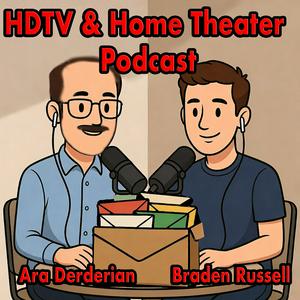
Get the free radio.net app
- Stations and podcasts to bookmark
- Stream via Wi-Fi or Bluetooth
- Supports Carplay & Android Auto
- Many other app features
Get the free radio.net app
- Stations and podcasts to bookmark
- Stream via Wi-Fi or Bluetooth
- Supports Carplay & Android Auto
- Many other app features


HDTV and Home Theater Podcast
download the app,
start listening.
